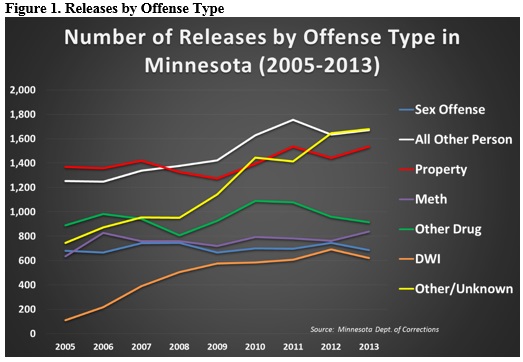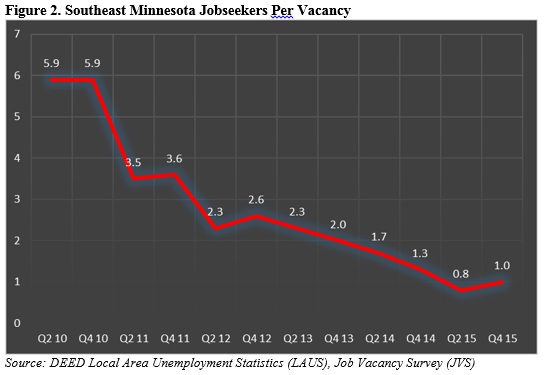 Southeast Minnesota is a health care and agricultural powerhouse. The region is home to the renowned Mayo Clinic and some of the world's most recognized food companies and brands.
Southeast Minnesota is a health care and agricultural powerhouse. The region is home to the renowned Mayo Clinic and some of the world's most recognized food companies and brands.
Advanced manufacturing is especially strong here, with machinery, chemicals, and electronics among the top products.
Want the freshest data delivered by email? Subscribe to our regional newsletters.
7/15/2016 2:23:55 PM
Obtaining employment with a criminal record has never been easy, but it is not impossible. With as many as one in four people having a criminal history and almost 8,000 individuals released from Minnesota state correctional facilities in 2013 (Table 1), according to the Minnesota Department of Corrections, it’s becoming a bigger issue. The largest number of individuals being released could be classified as “prime working age,” between 21 and 49 years of age.

As seen in Figure 1, the number of releases by type of offense has seen a general increase over the years, with large numbers of recent releases for offenders with personal or property crimes, as well as drug and sex offenses.

For ex-offenders in Southeast Minnesota, the recent drop in the number of job seekers per job vacancy could prove to be beneficial for these individuals, who may be in better position to compete for open jobs. In the second quarter of 2010, there were six job seekers for every vacancy in Southeast Minnesota. The most recent data from DEED’s Local Area Unemployment Statistics (LAUS) show that currently there is only one job seeker per vacancy (Figure 2).

The reasons that individuals with criminal backgrounds may have an easier time obtaining employment are two-fold. First, the number of job openings has been increasing rapidly in the past couple years, leading to many more opportunities for job seekers. Second, there has also been a decline in the number of unemployed individuals looking for work. This is making it more and more difficult for employers to find workers to fill their open positions and may cause them to have to consider workers with a criminal past. There is much less competition for jobs for those who have a criminal history, which could allow them to more readily obtain employment.
While having a criminal background can be one of the most severe barriers to gaining employment, the stigma associated with a criminal record can be overcome. According to Luis Brown-Pena, ex-offender specialist with DEED, one of the major concerns employers have about hiring ex-offenders or recently released individuals is that they don’t have the skills required to do the job.
Oddly enough, in many cases this is far from true. Many individuals who have served time in correctional facilities have worked in prison industries, such as working with plastics in Faribault or logistics in Stillwater. There are many other industries in the correctional facilities in Minnesota as shown in Table 2. Working these jobs while incarcerated helps individuals develop and maintain the job skills needed in similar jobs in the free world, of which there are 8,240 vacancies in Southeast Minnesota exist as of the fourth quarter of 2015, according to DEED’s Job Vacancy Survey.

These prison work experiences give formerly incarcerated individuals real-life examples of the tasks they performed, while ensuring employers these are tasks they can and will do once hired.
Contact Mark Schultz.